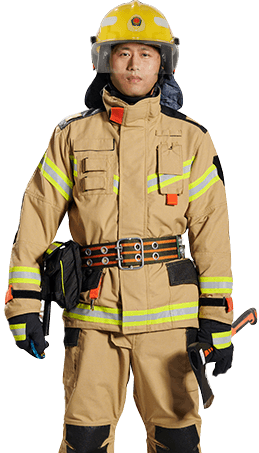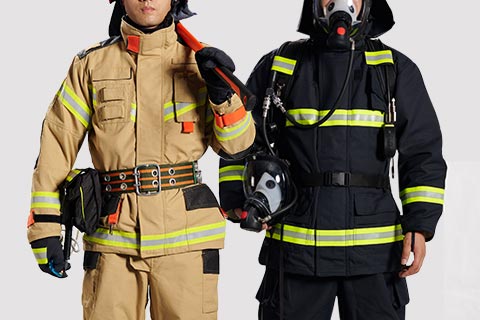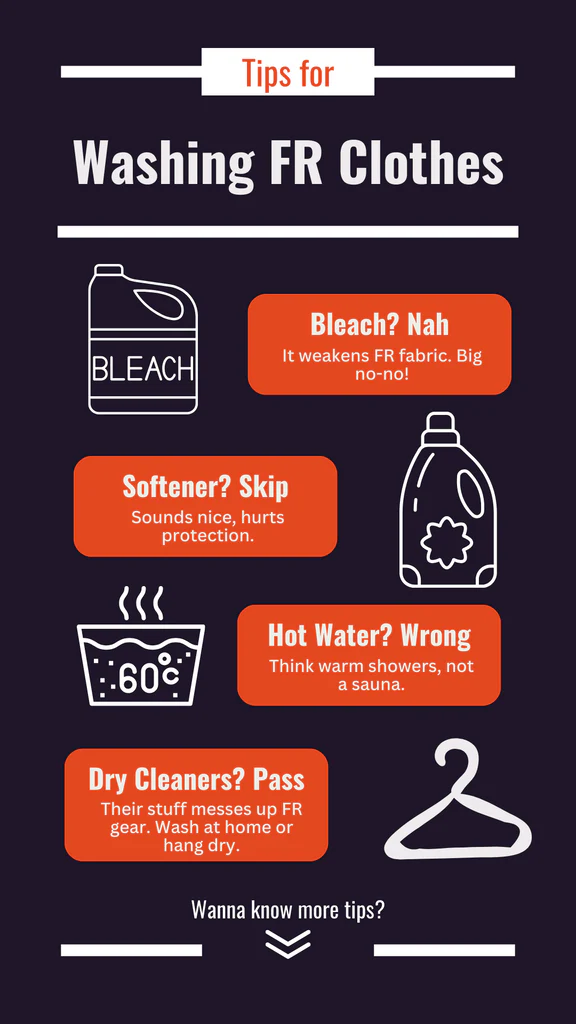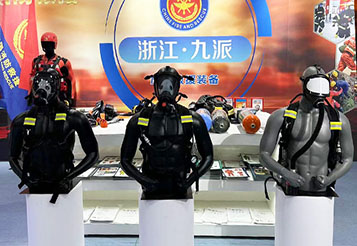How to Wash Flame Resistant Clothes
In high-risk industries such as petrochemical, electric power and firefighting, flame-retardant (FR) garments are an important line of defence to safeguard the lives of employees. However, many people have overlooked a key issue: incorrect washing methods may lead to a significant reduction in protective performance, or even lead to potential safety hazards. In this article, we will combine material science and professional washing standards to provide you with a set of systematic cleaning guidelines for FR clothing.
The Importance of Washing FR clothing
The protective performance of FR clothing comes from its special material. Currently, mainstream flame retardant fabrics are divided into two categories: one is cotton fibres treated with chemical finishes (e.g. Proban process), and the other is intrinsically flame retardant fibres (e.g. Nomex, Lenzing FR). These fibres or coatings prevent the spread of flames by mechanisms such as heat absorption and degradation and the formation of heat-insulating layers when exposed to open flames. However, washing at high temperatures, alkaline detergents or mechanical friction may damage the fibre structure, resulting in a loss of protective properties.Case warning: An oil company once used chlorine bleach to clean FR overalls by mistake, causing the fabric to lose its flame retardant function within three months, which eventually led to serious burns during an equipment overhaul. This highlights the importance of scientific washing for FR garments.
Three Core Washing FR clothing Principles
Strictly Follow Label Instructions
Water temperature control: Most FR fabrics are recommended to be washed in cold (≤40℃) or lukewarm water, as high temperatures may lead to fibre shrinkage or coating peeling off. For example, cotton FR shirts need to be pressed in ‘permanent press’ mode, while canvas jackets can be washed in the normal programme.Wash cycle: Avoid vigorous tumble drying, gentle mode is recommended to reduce mechanical damage. In industrial washing, the spinning time should be limited to 2 minutes to prevent creasing.
Drying method: Low temperature drying (≤120℃) or natural drying is the best, high temperature may accelerate the aging of fibre. Experiments of a famous brand show that continuous use of high temperature drying can shorten the life span of FR fabrics by 30%.
‘Strict choice’ of Detergent
Prohibited Ingredients: Fabric softeners, starch, chlorine bleach can form a coating on the fibre surface, reducing breathability and increasing flammability. Studies have shown that residual softeners can reduce a fabric's limiting oxygen index (LOI) from 28 per cent to 21 per cent, which is close to the level of ordinary cotton fabrics.Recommended products: Choose a neutral detergent with a pH value of 6.5-7.5. Non-ionic detergents (e.g. alkyl glycosides) can be used in industrial scenarios.
Water Quality and Pre-treatment Techniques
Soft water priority: Calcium and magnesium ions in hard water are prone to react with detergents to generate precipitates that clog fibre pores. By installing a water softening system, a steel mill was able to extend the average life of FR garments to 80 washes.Pre-treatment programme: Stubborn stains such as oil stains need to be pre-soaked in neutral detergent for 15 minutes, to avoid direct machine washing resulting in stain penetration.
Differential Operation Between Domestic and Industrial Scenarios
Four-step Household Washing Method
Turn the laundry inside out to reduce electrostatic adsorption caused by surface friction.Separate washing: Separate from normal laundry to prevent dyes or lint from contaminating FR fibres.
Localised stain removal: Use a soft bristle brush dipped in detergent to gently brush the neckline and cuffs, avoiding excessive rubbing.
Ironing at low temperature: for wrinkle removal, keep the temperature below 110°C and avoid direct contact with the coated surface.
Key Parameters for Industrial Washing
Pre-rinse programme: rinse in hot water at 105°C for 3 minutes to loosen stubborn stains.Tunnel drying: control the temperature gradient between 150°C and 200°C and avoid exceeding the 280°C threshold.
Water quality monitoring: Regularly test water hardness and add chelating agent if it exceeds 150ppm.
When Should We Change FR Garments?
Lifespan Indicators
Threshold of washing times: Most brands promise to maintain the protective performance within 50 times of standard washing (e.g. BOCOMAL shirts), after exceeding which professional testing is required.Physical damage: when there are holes, serious pilling or fading of colours, they should be replaced even if they have not reached the number of washes.
Simple Test Methods
Flame test: Cut 1cm² of fabric and light it on fire. If the flame extinguishes itself within 3 seconds without dripping, the protection is still in place.Transmittance test: Observe the fibre density against a light source, if there is an obvious thinning area, you need to be alert.
Advanced Maintenance FR Clothing Tips
First aid Programme for Stains
Machine oil contamination: Immediately cover the oil stain with corn starch, let it stand for 2 hours and brush it off, then wash it routinely.
Metal splatters: wipe with a soft cloth dipped in white vinegar, avoid scratching the fabric with steel wire balls.
Storage and Maintenance
Hanging storage: Use wide shoulder hangers to prevent shoulder deformation.Moisture-proof treatment: bamboo charcoal packs can be placed in the wardrobe during the rainy season, with humidity controlled below 50%.
Regular Ventilation: Dry clothes in the shade for 2 hours every quarter, avoid direct sunlight.
Industry Cutting-edge Technology Revelation
As material science advances, new types of FR fibres are emerging. Lenzing FR fibres, for example, use a closed-loop production process that allows them to biodegrade within six months of disposal, while maintaining excellent breathability. This type of fibre needs to be washed with care to avoid contact with fluorescent whiteners, which can interfere with chemical properties. In the future, smart FR garments may incorporate sensors to monitor the condition of the fabric in real time and indicate when it is time to replace it.Conclusion
The cleaning of FR garments is not an ordinary household chore, but a professional operation that concerns life safety. By strictly following the scientific process, we can not only extend the service life of the garments, but also ensure that the protection performance is foolproof at critical moments. It is recommended that companies set up maintenance files for FR clothing, record the number of times each piece of clothing is washed and its condition, combined with regular testing, to build an all-round safety protection system.
Next Article:
Last Article:
Request A Quote
Related News

Quick Consultation
We are looking forward to providing you with a very professional service. For any
further information or queries please feel free to contact us.







